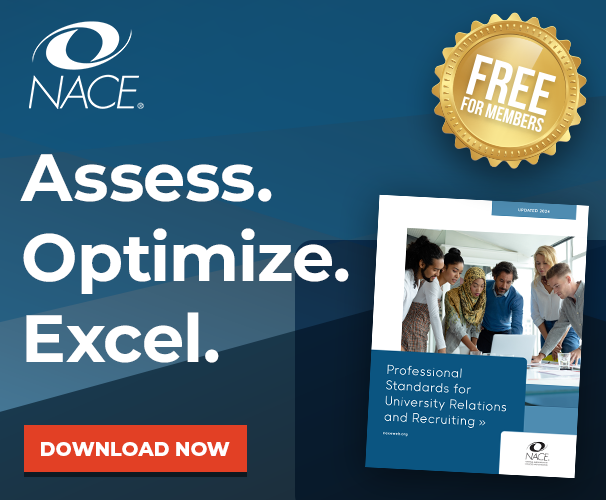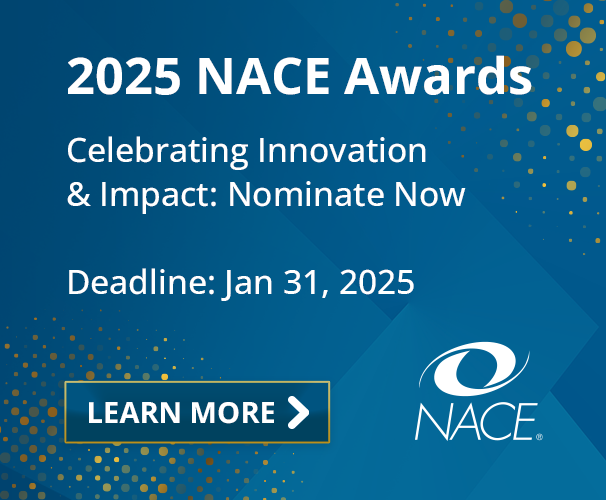Visa’s internship program is designed to build full-time conversion and provide an exceptional experience for incoming talent, and has a target conversion rate of 70%.
“That is communicated to the business and is why we need to have a full-time headcount to hire an intern,” explains Phill Haig, Visa’s director of early career programs.
“We look for high-performing interns who we can be confident we will be able to hire as full-time employees.”
Among the skills and competencies Visa seeks in its internship candidates, it looks for candidates who demonstrate intellectual curiosity.
“When students are interviewing with us, we're considering the questions that they're asking us as much as we are considering the answers that they're providing to our questions,” Haig says.
‘Things that set strong talent apart for us are the questions that they ask, the enthusiasm they have to get involved in things outside of their project, their willingness to offer an opinion or ask questions, and more.”
Haig says there are two elements to Visa’s intern onboarding: a centralized overall approach and a manager-led onboarding experience.
“In our exit survey, we found that more than 80% of interns had not heard from their managers before their first day,” Haig notes.
“I really wanted to change that because more than 65% of our interns said that they wanted to connect with managers earlier on. We give our managers a toolkit for engaging interns at a much earlier stage now.”
On day one, Visa holds an orientation for interns that is centralized and run by Haig’s programming team. The orientation includes education around Visa and training from Visa University—the company’s learning and development function—that disambiguates its business model and processes. Visa also sets expectations for the internships during a program overview.
“The programming team is small and mighty, but its members can’t be in every location, so we have site leads in a volunteer role for each of our offices. Site lead volunteers run orientation and coordinate internship activities, such as the National Internship Day and a farewell event,” he explains.
Visa develops strong ties to its interns in several ways. One is through a mentorship program held in groupings of three or four interns matched with a senior leader. The leader receives a playbook complete with ice-breaker exercises and talking points to stimulate group conversation focused on a designated competency.
“We also encourage the leader to share their own experiences with that competency,” Haig adds.
“Mentorship is key, and we also focus on leadership exposure. We have a global case competition that we run every year during which interns work in teams to solve an actual business case.”
Interns from several locations form regional teams to create sustainability or social impact business cases, which are presented at regional and global finals to board-level executives. The winning team presents their work to Visa's CEO.
“Getting face time with people at those levels presents an amazing opportunity and giving interns meaningful work in competitions where their opinion is heard and respected makes it more impactful,” Haig says.
There are numerous other engagement and networking opportunities Visa offers to its interns, such as a DEI speaker series with ERGs sparking conversations afterward, a career development series featuring vendors who talk about practical career development skills, and a buddy process where interns have opportunities to pair with early career professionals to support them throughout their internships.
“These have been valuable for ensuring our interns get a well-rounded experience,” Haig says.
He offers several suggestions for organizations to achieve a high intern conversion rate:
- Focus on demand planning and workforce planning—Make sure there are opportunities and ensure your internship program is the right size. If you are hiring too many interns and are not able to integrate them into your work force, you are setting yourself up for failure.
- Don’t overlook the importance of the work interns are doing and the management experience they get—Haig said he is a strong believer in the principle that people don’t leave jobs as often as they leave line managers. Make sure managers are well-equipped to understand this type of talent and the needs of this particular group. Provide the knowledge and tools managers need to give interns a top-notch experience. Also, help with the design of the work the interns are doing. Haig says many managers will leave this until the last minute and don’t think through an impactful project interns can work on. Visa has managers submit a plan for review well before the intern starts to make sure the work is high quality and of an appropriate level for an intern.
- Be reflective of the story you want to tell about your company—Visa makes sure to balance skill development with education about its industry, and makes sure interns understand Visa wants its employees to have meaningful careers and that it has a strong commitment to DEI. These elements are brought to life by the different program constructs Visa’s interns experience.
“The goal is to convert interns into full-time employees,” Haig says.
“This starts with their recruitment into the internship program and continues throughout the internship and when they return to campus. All throughout, we demonstrate our commitment to them as employees and as people.”




